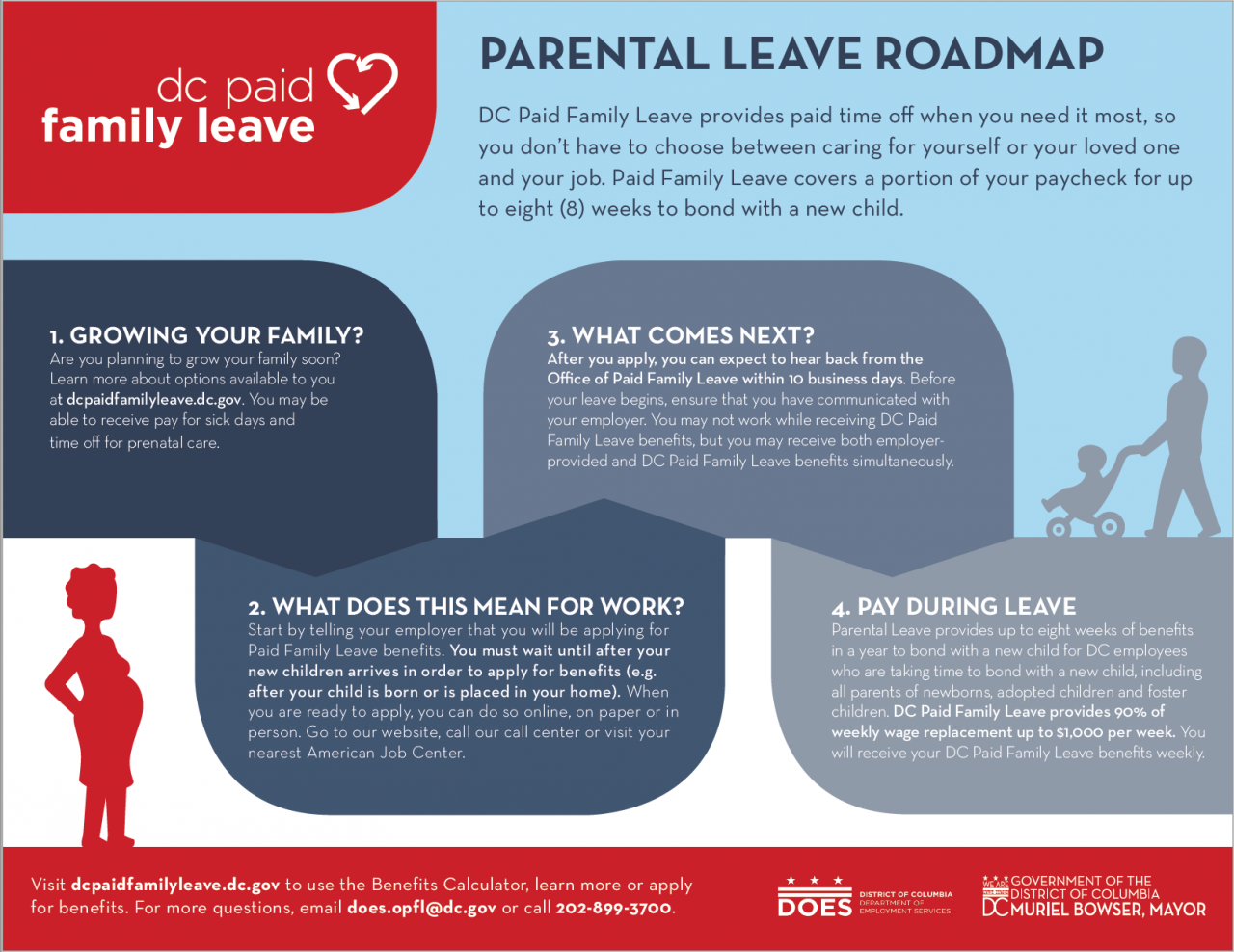The benefits of paid family leave are multifaceted, extending beyond the individual to impact businesses, communities, and the economy as a whole. Let’s delve into the ways paid family leave fosters economic growth, promotes health and well-being, strengthens families and society, and presents policy considerations for its implementation.
Economic Benefits: Benefits Of Paid Family Leave

Paid family leave is an essential policy that supports economic growth and stability. It enables individuals to balance their work and family responsibilities, resulting in increased workforce participation and productivity.
One of the primary economic benefits of paid family leave is its impact on employee retention. When employees have access to paid family leave, they are more likely to remain with their current employer, reducing employee turnover and absenteeism.
Reduced Employee Turnover and Absenteeism
- Paid family leave allows employees to take time off to care for a new child or a sick family member without fear of losing their job or income.
- This flexibility reduces the likelihood of employees leaving their current position to find an employer with more family-friendly policies.
- Additionally, paid family leave reduces absenteeism as employees are less likely to take unpaid time off to attend to family matters.
Increased Business Revenue and Profitability
- Lower employee turnover and absenteeism lead to increased productivity and efficiency within the workplace.
- When employees are well-rested and have their personal lives in order, they are more likely to be engaged and focused on their work.
- This increased productivity can lead to higher revenue and profitability for businesses.
Health and Well-being Benefits
Paid family leave has been shown to improve the physical and mental health of employees and their families. Employees who have access to paid family leave are more likely to report good health and have lower rates of stress, anxiety, and depression.
The world of traditional herbal remedies is vast and offers numerous benefits for our health and well-being. One such herb is the humble kangkong leaf, renowned for its nutritional value and medicinal properties. Rich in vitamins, minerals, and antioxidants, kangkong leaves are known to boost immunity, reduce inflammation, and promote overall health.
Benefits of kangkong leaves extend to hair and skin care, as they contain vitamins A and C that support hair growth and collagen production. Curry leaves are another herbal wonder, particularly for hair health. Benefits of curry leaves for hair include strengthening hair follicles, reducing hair loss, and promoting hair growth.
Pandan leaves, often used in Southeast Asian cuisine, also have therapeutic benefits when consumed as a drink. Benefits of drinking pandan leaves water include promoting digestion, reducing inflammation, and calming the nerves. Finally, tomato leaves, often discarded as waste, hold significant nutritional value.
10 benefits of tomato leaves include boosting immunity, reducing inflammation, and supporting weight loss.
Stress Reduction and Work-Life Balance
Paid family leave can help employees to reduce stress and promote work-life balance. When employees are able to take time off to care for a new child or a sick family member, they are less likely to experience burnout and can return to work feeling refreshed and rejuvenated.
Long-Term Health Benefits
Paid family leave can also have long-term health benefits for both employees and their children. Studies have shown that children who have access to paid family leave are more likely to be healthy and have higher educational attainment. Additionally, employees who have access to paid family leave are more likely to stay in the workforce, which can lead to increased job satisfaction and higher lifetime earnings.
Social Benefits

Paid family leave provides invaluable support during critical times, fostering stronger families and communities. It empowers individuals to prioritize their personal and familial obligations, promoting a harmonious work-life balance.
Paid Family Leave Strengthens Families and Communities
Paid family leave enables parents to bond with their newborns, reducing the risk of postpartum depression and ensuring the well-being of both mother and child. It allows caregivers to attend to ill or aging loved ones, preserving family connections and reducing the burden on healthcare systems.
From promoting hair growth with benefits of curry leaves to detoxifying the body with benefits of drinking pandan leaves water , the benefits of leafy greens extend beyond just spinach and kale. For instance, did you know that benefits of kangkong leaves include boosting immunity and fighting inflammation?
And let’s not forget the impressive 10 benefits of tomato leaves , such as reducing cholesterol and improving skin health.
Paid Family Leave Promotes Gender Equality and Reduces the Gender Pay Gap
By providing equal access to paid family leave, both men and women can actively participate in caregiving responsibilities. This breaks down traditional gender roles, empowering women to pursue careers without sacrificing their family commitments. It also reduces the gender pay gap by allowing women to maintain their employment and earning potential.
Paid Family Leave Enhances Social Cohesion and Overall Well-being
Paid family leave contributes to a more equitable and compassionate society. It fosters a sense of shared responsibility and reduces social isolation by providing support to families during challenging times. By investing in the well-being of families, paid family leave ultimately strengthens the fabric of our communities.
Policy Considerations
Policymakers should carefully consider various factors when implementing paid family leave programs. Comparing existing policies in different countries or states provides valuable insights into effective approaches.
A comprehensive analysis should also address key policy considerations, such as:
Duration of Leave
- The optimal length of paid family leave to balance employee needs with business operations.
- Variations in leave duration based on the reason for leave (e.g., childbirth, adoption, family illness).
Eligibility Requirements
- Criteria for employee eligibility, such as length of employment, family relationship to the individual in need of care.
- Potential for phased-in eligibility or varying levels of benefits based on employment status.
Funding Mechanisms
- Options for funding paid family leave programs, including employer-funded, employee-funded, or government-funded models.
- Impact of funding mechanisms on program sustainability and accessibility.
Job Protection, Benefits of paid family leave
- Ensuring job protection and benefits continuation for employees taking paid family leave.
- Measures to prevent discrimination or retaliation against employees exercising their leave rights.
Potential Challenges and Opportunities
Expanding paid family leave programs presents both challenges and opportunities:
- Challenges:Balancing costs for employers, potential impact on business operations, and addressing administrative complexities.
- Opportunities:Enhancing employee well-being, increasing productivity, and promoting gender equality in the workforce.
Epilogue
Paid family leave emerges as a transformative policy that supports individuals, families, businesses, and society. By investing in paid family leave, we invest in the health, well-being, and economic prosperity of our communities and future generations.
FAQ
How does paid family leave contribute to economic growth?
Paid family leave increases workforce participation and productivity, reduces employee turnover and absenteeism, and positively impacts business revenue and profitability.
What are the health benefits of paid family leave?
Paid family leave improves the physical and mental health of employees and their families, reduces stress, promotes work-life balance, and provides long-term health benefits for both employees and their children.
How does paid family leave strengthen families and communities?
Paid family leave provides support during critical times, strengthening families and communities. It promotes gender equality, reduces the gender pay gap, and fosters social cohesion and overall well-being.

